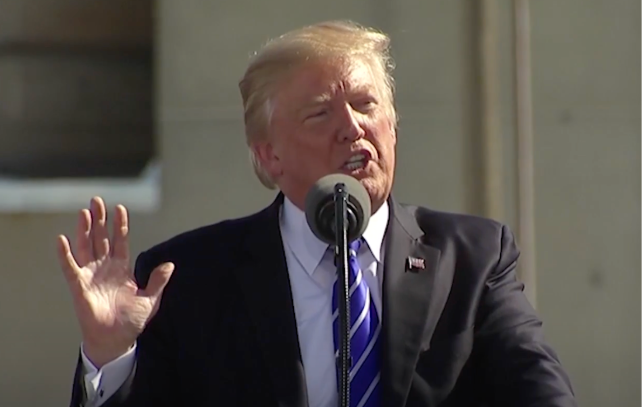Breaking News
Don’t Look Now, But President Trump Wants Congress to Fulfill His Many Tax Promises

Source: YouTube
President Donald Trump met with House Republican leaders at the White House on Thursday to reiterate his many tax promises. These include no tax on seniors' Social Security, no tax on overtime pay, and extending his 2017 Tax Cuts and Jobs Act (TCJA), set to expire later this year. He also wants to adjust the cap on State and Local Tax (SALT) deductions, eliminate special tax breaks for billionaire sports team owners, and close the carried interest tax deduction loophole. Additionally, Trump aims to institute tax cuts for “Made in America” products and eliminate taxes on tips. While these pledges can provide relief to many Americans, how realistic are Trump’s tax promises?
Promising Relief for Workers and Seniors
Trump’s promise to eliminate federal income taxes on Social Security benefits for seniors is designed to boost retirees' disposable income. While this might seem like a straightforward benefit, the fiscal implications are massive. According to the Committee for a Responsible Federal Budget, removing these taxes could add around $1.6 trillion to the national deficit over a decade. Achieving this goal will require bipartisan support, which could be challenging due to concerns over increasing the national debt.
Eliminating taxes on overtime pay is another of Trump’s tax promises aimed at rewarding hardworking Americans. While this initiative could significantly boost take-home pay, it also threatens to reduce federal revenue. Legislative approval is necessary, and opposition could arise from those wary of the potential budget shortfall. In addition, Trump would need to balance worker benefits with fiscal responsibility to achieve an equilibrium.
Trump also proposes eliminating taxes on tips, a move that would particularly benefit workers in the service industry. While this measure can increase take-home pay for millions of Americans, it would similarly reduce federal revenue. Lawmakers may challenge this initiative by citing budgetary constraints and the need for alternative revenue sources.
Revisiting the 2017 Tax Cuts and SALT Deductions
The 2017 Tax Cuts and Jobs Act of 2017(TCJA) brought sweeping tax cuts for individuals and corporations. With the provisions set to expire this year, The President now wants to make these cuts permanent. However, leading economists worry that extending them could add over $5 trillion to the national debt in the next ten years. This potential increase in the deficit could spark resistance from fiscal conservatives and lawmakers focused on long-term economic stability.
Trump’s tax promises also include adjusting the State and Local Tax (SALT) deductions deduction cap, a hot-button issue in high-cost states. While this provides taxpayer relief in places like New York and California, it might come at the cost of reducing federal revenue. Moreover, lawmakers from states that don’t benefit from these deductions may oppose the change, making it a politically sensitive proposal.
Targeting Wealth and Encouraging Domestic Growth
In a surprising twist, Trump said he also wants to eliminate tax breaks for billionaire sports team owners. This move targets specific provisions that allow these wealthy individuals to reduce their tax liabilities. While it could promote tax fairness, it’s likely to face stiff resistance from powerful stakeholders and may require careful legislative crafting to avoid backlash.
Trump’s promise to close the carried interest tax deduction loophole is not new—he tried and failed in 2017. This loophole allows private equity and hedge fund managers to pay taxes at lower capital gains rates instead of higher ordinary income rates. While closing it could generate significant revenue and promote fairness, it will face heavy lobbying opposition. Even some Republicans and Democrats have historically resisted this change.
Trump’s final major tax promise is to institute tax cuts for products made in the United States. This move aims to boost domestic manufacturing and make American products more competitive. However, defining what qualifies as “Made in America” could complicate implementation. Additionally, such cuts might lead to trade tensions and retaliation from international partners.
Are Trump's Tax Promises Achievable?
While President Trump’s tax promises aim to stimulate the economy and benefit various groups, their implementation faces numerous challenges. Economic implications, potential increases in the national debt, and political opposition are significant hurdles. Achieving these goals will require careful negotiation and bipartisan support.
Which of Trump's tax promises should be prioritized? Tell us what you think!
